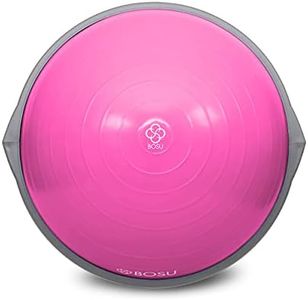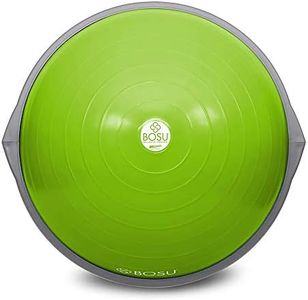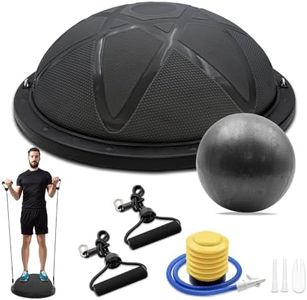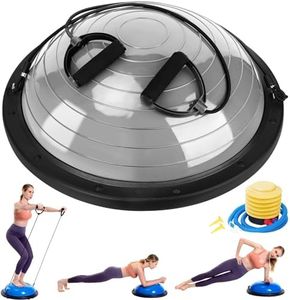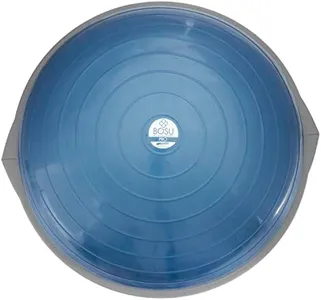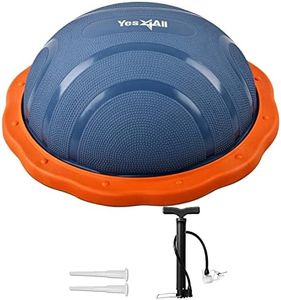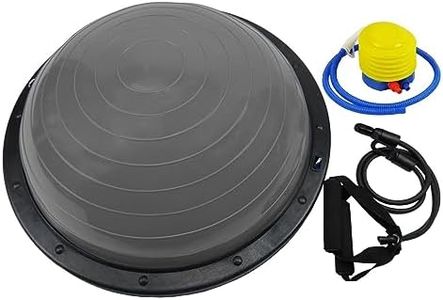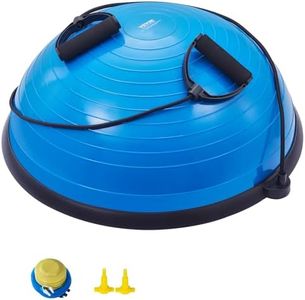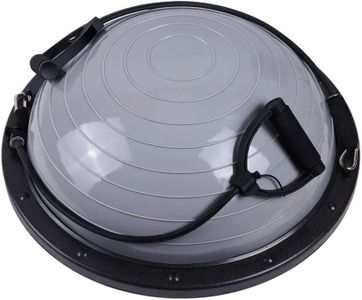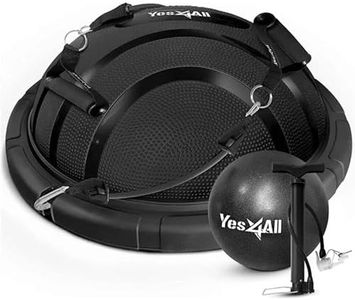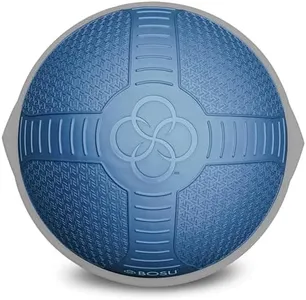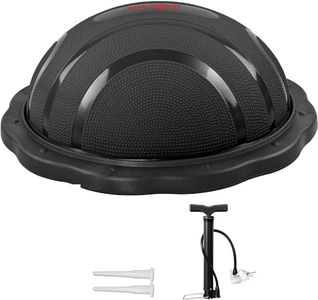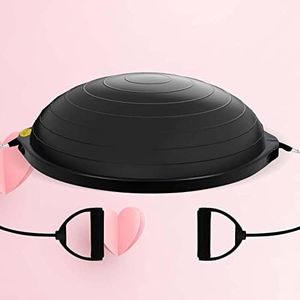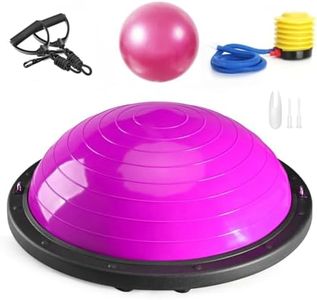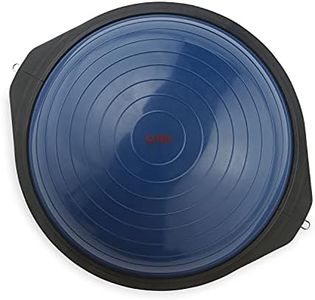We Use CookiesWe use cookies to enhance the security, performance,
functionality and for analytical and promotional activities. By continuing to browse this site you
are agreeing to our privacy policy
10 Best Bosu Balls
From leading brands and best sellers available on the web.Buying Guide for the Best Bosu Balls
When you're shopping for a BOSU ball (also known as a balance trainer), it's important to consider how you'll use it, where you'll keep it, and what features will best suit your fitness goals. BOSU balls are versatile pieces of exercise equipment used for stability, balance training, strength, and cardio workouts. Before picking one, think about the types of exercises you plan to do, your available storage space, and whether you'll use it at home, at a gym, or on the go. A good BOSU ball should be durable, comfortable, and stable during use.Diameter/SizeThe diameter of a BOSU ball determines how much surface area you have to stand, sit, or place your hands on during exercises. Most common sizes range from around 20 to 26 inches. Smaller BOSU balls are easier to store and move around, making them good for people with limited space or who plan to travel with their equipment. Larger BOSU balls provide a bigger exercise surface, which can be more comfortable and stable for taller users or those wanting more room for movement. Choose a size that fits your body and the types of exercises you prefer; if you're taller or want more versatility, a larger option may be best, while a smaller one suits portability.
Weight CapacityWeight capacity refers to the maximum weight the BOSU ball can safely support without losing stability or becoming damaged. This is important for safety as exceeding the limit can cause the ball to burst or malfunction. Weight capacities usually start around 250 pounds and go up to 350 pounds or more. When considering the right BOSU ball, check your own weight (and factor in any additional resistance you might use, like dumbbells), and pick a model that exceeds this to ensure safe and long-lasting use.
Base Material and GripThe base of the BOSU ball, which rests on the floor, is typically made from hard plastic or rubber and sometimes has textured patterns for grip. A good grip is crucial to prevent the equipment from sliding during workouts, which can cause accidents. If you mostly exercise on slick floors, look for a BOSU ball with a textured, non-slip base to ensure safety. For those using the ball on carpet or rubber gym flooring, grip is still important but might not need to be as aggressive.
Dome Material and TextureThe dome is the inflatable side you stand or sit on, usually made from thick PVC or similar materials. The quality and thickness of this material affect both comfort and durability. A thicker, well-made dome will feel stable and less likely to puncture, while textures or ridges can help prevent slips when you’re sweating. If you plan on doing intense or high-impact workouts, or sharing the BOSU ball with others, pick one with a high-quality, durable dome and a textured surface for better traction.
Inflation Method & AdjustabilityInflation refers to how you fill the dome with air to the desired firmness. Some BOSU balls come with hand or foot pumps and allow you to adjust the firmness by adding or removing air. Firmer settings make exercises more challenging and stable, while less air creates more instability for advanced balance work. If you’re new to balance training, a more inflated dome can help you feel secure, while experienced users might want a softer, less firm dome for added challenge. Being able to easily adjust inflation lets the equipment grow with your skills.
